- Home
- Peter Ackroyd
Charlie Chaplin Page 7
Charlie Chaplin Read online
Page 7
Direction was an energetic and personal affair. He demonstrated to the other actors the attitudes and expressions he wanted from them; he went through their steps and diverted them with handstands and general “mugging” to lighten the atmosphere. The camera was anchored at middle distance, from which vantage the actors performed in full view with very few close-ups or fanciful editing; this is the way that Chaplin liked it. He always wanted to make sure from the cameraman that his feet were showing. Like a dancer he needed the full revelation of his art. He seemed to have a speed and movement that distinguished him from the other performers; as T. S. Eliot once remarked, “he has escaped from the realism of the cinema and invented a rhythm.” In an interview in 1942 Chaplin remarked that “movement is liberated thought.”
The Keystone comedies reached the screens of the nickelodeons two or three months after filming had been completed, and so there was a delay in the recognition of the young Chaplin by the public. He was being noticed but he was not yet recognised. The newspapers had different names for him such as “Chapman” or “Chatlin” or simply “Edgar English.” But, as we have observed, this was the age in which a vast public was being drawn to the motion pictures. It became known as “the age of the common man” with a technology that could cater to his needs and illusions. Chaplin unleashed another aspect of this power. All the dispossessed or lost, or those who had failed in life, saw in him an image of themselves. That was his genius—to turn his early experience of hopelessness into a universal symbol. He saw as much himself, and trembled on the threshold of his fame.
Caught in the Rain, released after Caught in a Cabaret, sustains his part as a drunk and philanderer. It was followed by A Busy Day and The Fatal Mallet. In A Busy Day he plays a violently disposed, almost insane, female in the tradition of the London pantomime dames. It was filmed during a four-hour parade in celebration of an expansion of Los Angeles Harbor, and is a miracle of quick timing and improvised performance. In The Fatal Mallet Charlie is an unscrupulous and brutal pursuer of women. No female has the right to reject him, and they must suffer all the consequences of their folly. Mabel Normand, the object of his lust, is hit with a brick in the face. He sticks out his backside so that he looks like the menacing cock of the walk. He scratches his upper torso and makes a face like that of a baboon.
So Charlie, the “little fellow,” is not altogether a benign figure; he can be cunning, cruel and hostile; he has a taste for brutality; he bites his opponents and can engage in unprovoked malice; he can conjure up a sickly grin or the imbecilic smile of a drunk; he generally puts his hand over his mouth when he laughs, as if he has something to hide; he thumbs his nose and sticks out his tongue; he exhibits an almost elfin wickedness; he is leering and lascivious, propositioning almost every woman whom he encounters. He colludes with his audience all the time with ingratiating or impish glances; he winks and grins; he mimics exasperation and indignation towards the camera. And he enjoyed the response. He would attend the film-houses, often standing at the back, and loved to hear what he called “the joyful little screams” that were provoked by his first appearance.
In June 1914, five short pictures were released that helped to reveal the power of motion in the Keystone films. In The Knockout Chaplin plays a boxing referee whose gyrations among the ropes and around the ring must have been sedulously choreographed; it was the kind of role he had played for Karno, but now with a difference. The art of the cinema was truly the art of motion; that was how it had been conceived from the beginning; these were “motion pictures” celebrating all the possibilities of movement. No cultural form had ever been able to achieve that feat before.
In Mabel’s Busy Day, for the first time, he rolls his bowler hat down the length of his arm and then catches it. The action is played out at a real automobile race, and once again deploys all the resources of frenetic movement. One reviewer described it as “side-splitting.” For the first time human beings can be seen in collision with the world and with each other; the important moment is the moment of impact, with the awareness of materiality. Chaplin later revealed that the movements of all the players had been rehearsed as if they were participating in a frantically paced ballet. Charlie himself emphasises the quality of dance with his spins and turns and pirouettes.
In Mabel’s Married Life, Mabel Normand proved that she was as expert a pantomimist as Chaplin himself. When Charlie puts his leg over Mabel’s lap, one of his most emphatic sexual positions, she examines the broken sole of his shoe. It is an apt image of their relationship on film. In the concluding scenes he attacks a boxing dummy as if it were a real and dangerous opponent; each time it bobs up he launches an ever more vicious assault upon it. In Chaplin’s art his rivals are both comic and sinister. This is a world of possibly brutal violence rendered harmless by comedy; that is the secret of its popularity in the real world of the audience.
The Chaplin phenomenon was now spreading beyond the shores of the United States. Keystone released the first Chaplin films in Britain, in June 1914, with an advertisement asking “ARE YOU PREPARED FOR THE CHAPLIN BOOM?” and went on to claim that “there never has been so instantaneous a hit as that of Chas Chaplin.” He had previously been known in Britain as a star of the Fred Karno company, but it was now agreed that he had joined the front rank of film comedians.
Laughing Gas and The Property Man followed, sustaining Chaplin’s pre-eminence. In Laughing Gas he plays the part of a dentist’s cleaner who promotes himself to an assistant, allowing room for all the instincts of refined cruelty that Charlie possesses. He terrifies patients with oversized pliers; he engages a female patient in what another period might describe as sexual assault; he tries to revive an anaesthetised victim with a mallet, and even manages to punch waiting customers in the mouth. His logic is always curious. This lady wants something corrected, so he polishes her shoes while she is in the dentist’s chair. I have knocked out this man’s teeth with a brick. They were rotten. So why is he now complaining? This might be condemned as playing to children; yet Chaplin had already noticed that, in the audiences of his early films, the children always laughed first. He takes his violence to further heights in The Property Man, where he kicks an elderly employee repeatedly in the face and head. In the end he aims blows at him just for the fun of it. It has become instinctive. Yet this is the violence of the animated cartoons that Chaplin himself helped to inspire; it causes no hurt and produces no injury. The violence of his films, in later years, would in any case be more subtle and subdued.
His next film, The Face on the Bar Room Floor, went in a wholly different direction as a parody of conventional romance. One of his strongest tendencies was to deflate, mock and satirise easy or familiar sentiment; in this case an inebriate artist, down on his luck, laments to a barroom audience the loss of an early lover to a businessman. The story was taken from a poem of the same name. Bioscope predicted that the film “will evoke screams of laughter.” But what kind of screams will they be? Bertolt Brecht wrote in his diary, after seeing it, that “the film owes at least part of its effectiveness to the brutality of the audience.” The same might be said of almost all of the Keystone films.
The Face on the Bar Room Floor is not one of the most eminent of his films, except for a moment of inventive genius at its close. The Tramp sees his erstwhile lover with the businessman, now her husband, together with several small children. His relief at escaping that domestic fate is palpable. He shrugs his shoulders and turns his back to the camera; he stumbles over his shadow, and raises his hat to it. He has immense self-possession and instinctive charm. He begins a resigned walk away, enlivened by a jaunty little jump and quick-step that announces he is once more ready for the adventure of life. This walking off with a “lift” was to become a characteristic move.
Keystone Studios, 1915.
Courtesy of Ronald Grant Archive
Mack Sennett had now persuaded him to leave his cheap hotel and, on a temporary membership card, to join the Los Angeles Athletic Club
where he rented a large corner room for $12 a week. The room contained a piano as well as a row of bookshelves upon which he kept an array of pamphlets, booklets, and more solid volumes of what one friend called “all the gloomier philosophers.” He had access to the gymnasium and swimming pool, together with the restaurants and bars of the establishment. It was the social centre for the bachelors and businessmen of the town.
He wrote later that he lived in the softest lap of luxury for $75 a week, but it seems that he was not willing to extend his largesse to his friends. Chester Conklin once complained that Chaplin “was willing to let you buy him a drink … but I guess he had not spent much time in London pubs, where he would have learned that it was up to him to knock for the next round.” His meanness, or stinginess, was already very well known.
On 9 August 1914, he wrote what was for him a long letter, on the club stationery, to his older brother in which he expatiated on his good fortune. His name was in capital letters on the billboards; he was a huge box-office attraction, and was on the verge of making a great amount of money. He had become a big deal, a big shot, a big fish. He had lots of friends in Los Angeles, and even had his own valet. He was getting on well with Mack Sennett but, as he would often say in the future, “business is business.” He was also still taking the precaution of saving most of his income.
In the film he made soon after, The Masquerader, we see the youthful Chaplin arriving at the studio to begin work; he is cheerful, blithe and energetic. He fools with “Fatty” Arbuckle at the dressing table before returning to the set dressed as a woman; he is the epitome of femality, coy and inviting, prim and daring, in a series of gestures and expressions that were also characteristic of his male role as Charlie. He was of slight build and delicate features, with small hands that were often said to resemble those of a female. One friend, Carol Matthau, said of him that he “had what only whole men have—certain feminine qualities.” Mary Pickford, a veteran performer of the early era of cinema, remarked that “one would never say he was effeminate, but I would consider that he is at least 60 per cent feminine. You can see it in his work; he has feminine intuition.”
His performances have in that respect often been described as “camp,” but that is to mistake the nature of his role. Like all great clowns he partakes of both sexes; he is the born inveigler who goes through the world seeking sympathy and even affection. Why should he not “come on” to men as well as to women? He puts his hands between his knees and bats his eyelids; he wriggles and pouts; he saunters and swaggers; he often flirts with bullies in order to avert their wrath; he employs all the sexual signals of a woman. He is not parading himself as a homosexual, but instinctively and unexpectedly defending himself against a hostile world.
He was by now creating much more coherent narratives with a particular attention to the eccentricities of his character. In His New Profession he takes a tumble and lands upon dog shit before wiping the bottom of his trousers upon the grass; then he proceeds to rob a supposed cripple of his money. Chaplin seems here to be intent on breaking cinematic taboos by creating business all of his own. He was later to confirm that he was a success at Keystone because he turned himself into a distinctive act. Sennett and others never used him in any “chase” scenes; they knew that it would be a waste of his individuality.
His next film, The Rounders, displays him again in the role of a drunk. A “rounder” was at once a rogue and a bounder, thus illuminating Chaplin’s understanding of the part he has to play. In the company of an equally drunken “Fatty” Arbuckle they stagger from comedy to calamity with equal abandon. There is a difference, however. Arbuckle is a genial drunk. Chaplin is never genial in this condition; he is self-absorbed and utterly impervious to those around him; he deals with everyone and everything in a cruel and arbitrary fashion. He is still infantile in an adult world. He is a stranger in a strange land. Arbuckle said of his acting companion that “I have always regretted not having been his partner in a longer film … He is a complete comic genius, undoubtedly the only one of our time and he will be the only one who will be talked about a century from now.”
The New Janitor, released in late September 1914, shows him in full exploration of the possibilities of the “little fellow.” The element of pathos now enters the plot. It had already been pressing for entrance, but in this film it emerges almost fully formed. The new janitor is a put-upon, disparaged, and despised, lowly employee; even the lift attendant laughs at him, and obliges him to walk wearily up the stairs. As he steps patiently and slowly, the spectator feels that he has a history of suffering and disappointment behind him. This is a new development for Charlie.
His eventual triumph, when he single-handedly foils a bank robbery, is evidence of a new form of comic drama from Keystone where suspense and sentiment play a larger role than the comic-strip surprise and slapstick that came before. It is not coincidental that The New Janitor took seventeen days to complete rather than the two or three days normally expended. It may be that sentimentality was inevitable for the proper creation of Charlie; in the process, he becomes human and sympathetic in ways that were not previously available to him. In My Autobiography Chaplin recalled the remark of an actress watching one of the scenes during rehearsal. “I know it’s supposed to be funny,” she said, “but you just make me weep.”
This ability to convey pathos may have come to him instinctively and unexpectedly; he may not even have noticed it at the time. Certainly he did not attempt to reproduce it in his final films for Keystone. In his next film, Those Love Pangs, Charlie reverts to the role of a tough and verminous little brat engaged in a battle to win the charms and attentions of what seem to be prostitutes in the park. He looks disgruntled; he strikes out, preferring a kick in the chest to a punch in the face as a more defiant gesture; he bites a rival’s moustache, much more luxuriant than his own. He contemplates suicide for a moment only, but he is constitutionally incapable of emotional self-indulgence. He would much rather fight back.
Dough and Dynamite, like many of Chaplin’s films, emerged from a happy inspiration when one day he passed a bakery with the sign “BOY WANTED” in the window. It became one of the most successful, and most intricate, of all the Keystone comedies. An elaborate set was built, in the absence of Mack Sennett on duties elsewhere; when Chaplin discovered that he had gone over the budget he decided to turn the film into a two-reeler to recoup some of the costs. It ran for thirty-four, rather than for fifteen or sixteen, minutes. He need not have concerned himself with the returns; Dough and Dynamite, his thirtieth film, was three times as profitable as its rivals at the time. According to Sennett, this was the film that finally sealed the reputation of Chaplin with the general public. It was said by Photoplay that “people who never went to the movies before were driven by the accounts of the new comedian.” One cinema in New York presented only Chaplin films to its audiences.
He was now coming to the end of his contract with Keystone. Sennett placed guards at the studio to prevent competitors from approaching him, with instructions to interrupt if any stranger came too close. When filming His Musical Career, in the late autumn of the year, so many spectators surrounded him in a street scene that the traffic was blocked for some hours. Chaplin’s own style was also evolving all the time. He was now interested less in rapid cutting, in the Keystone style, than in longer scenes where his comic inventiveness could be better displayed. One reviewer noted Charlie’s “extreme seriousness, his sober attention to trivialities, his constant errors and as constant resentment of what happens to him.” All this was the fruit of long concentration and meditation.
In his August letter to Sydney, Chaplin had mentioned a long-term project that had consumed much of his attention in the summer. Tillie’s Punctured Romance has the distinction of being the first full-length comedy ever filmed, at eighty minutes, but it does not really mark any development of his art. Chaplin simply reverts to type as a stage villain enticing and defrauding the large and exuberant Marie Dressler. Dress
ler herself was a vaudeville star whose hatchet-faced visage was compensated by wild exuberance and extreme overacting. It is she, rather than he, who dominates the picture. He was, as a result, less than enthusiastic about the finished product.
Two last films had been contracted with Keystone, and he got them out of the way as expeditiously as possible. Getting Acquainted and His Prehistoric Past are by no means the best of his achievements, as he was distracted by the increasing pressures placed on him by various competing interests. Every studio now wanted him. Getting Acquainted was the last film in which he would act with Mabel Normand, but he was intent upon moving on. There was one final piece of business to perform. When he inadvertently lifts Mabel’s skirt with the hook of his cane, he is embarrassed for the sake of the cane; he spanks it and then scolds it, before giving it a placatory kiss. As he was to say later, “If what you’re doing is funny, you don’t have to be funny doing it.”
He had learned a great deal from his first film studio; he had learned how to perform in front of, and direct behind, the camera. He had learned how to improvise, and to follow an inspired idea to its natural conclusion. And he had, after all, created Charlie, the “little fellow,” under the auspices of Keystone. He had made thirty-six films in one year, 1914, and as a result had become the most popular film comedian in America. To some people he was film. But he had already rejected the frantic environment of the studio system. He would never work again for another director, and would always write his own parts.

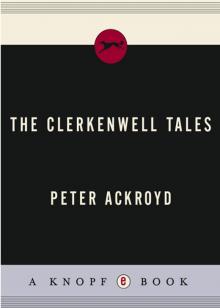 The Clerkenwell Tales
The Clerkenwell Tales The Canterbury Tales
The Canterbury Tales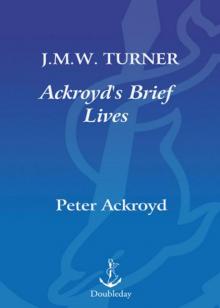 J. M. W. Turner
J. M. W. Turner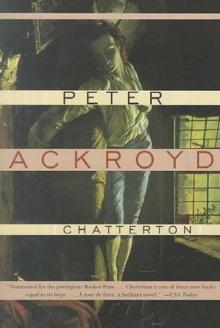 Chatterton
Chatterton The Canterbury Tales – A Retelling
The Canterbury Tales – A Retelling Alfred Hitchcock
Alfred Hitchcock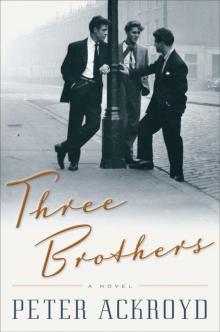 Three Brothers
Three Brothers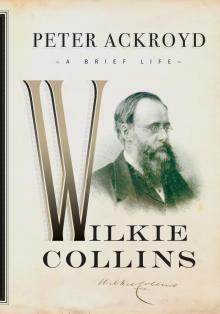 Wilkie Collins
Wilkie Collins Venice
Venice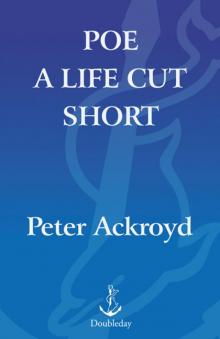 Poe
Poe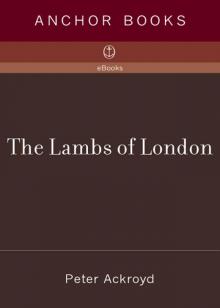 The Lambs of London
The Lambs of London London
London Queer City
Queer City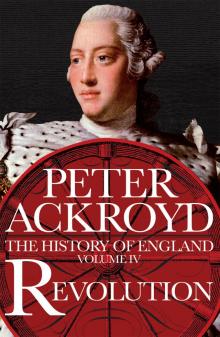 Revolution, a History of England, Volume 4
Revolution, a History of England, Volume 4 Venice: Pure City
Venice: Pure City Foundation
Foundation Thames
Thames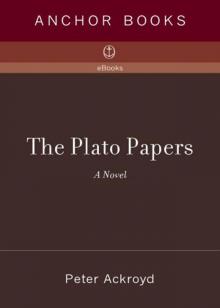 The Plato Papers
The Plato Papers The house of Doctor Dee
The house of Doctor Dee Rebellion: The History of England from James I to the Glorious Revolution
Rebellion: The History of England from James I to the Glorious Revolution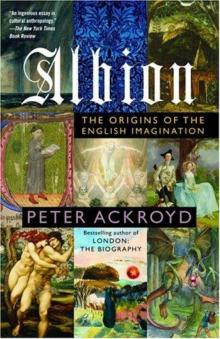 Albion: The Origins of the English Imagination
Albion: The Origins of the English Imagination The Fall of Troy
The Fall of Troy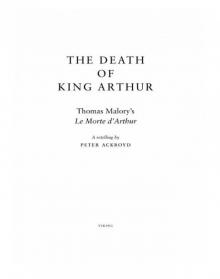 The Death of King Arthur
The Death of King Arthur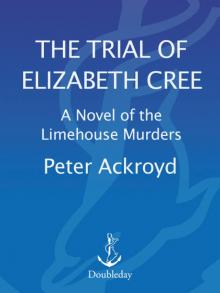 The Trial of Elizabeth Cree
The Trial of Elizabeth Cree London: The Biography
London: The Biography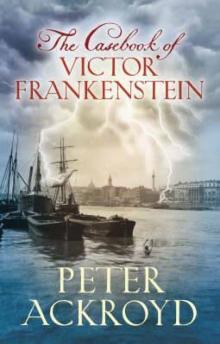 The Casebook of Victor Frankenstein
The Casebook of Victor Frankenstein Hawksmoor
Hawksmoor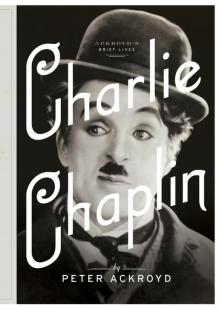 Charlie Chaplin
Charlie Chaplin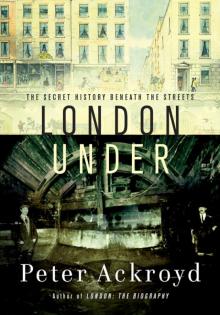 London Under
London Under